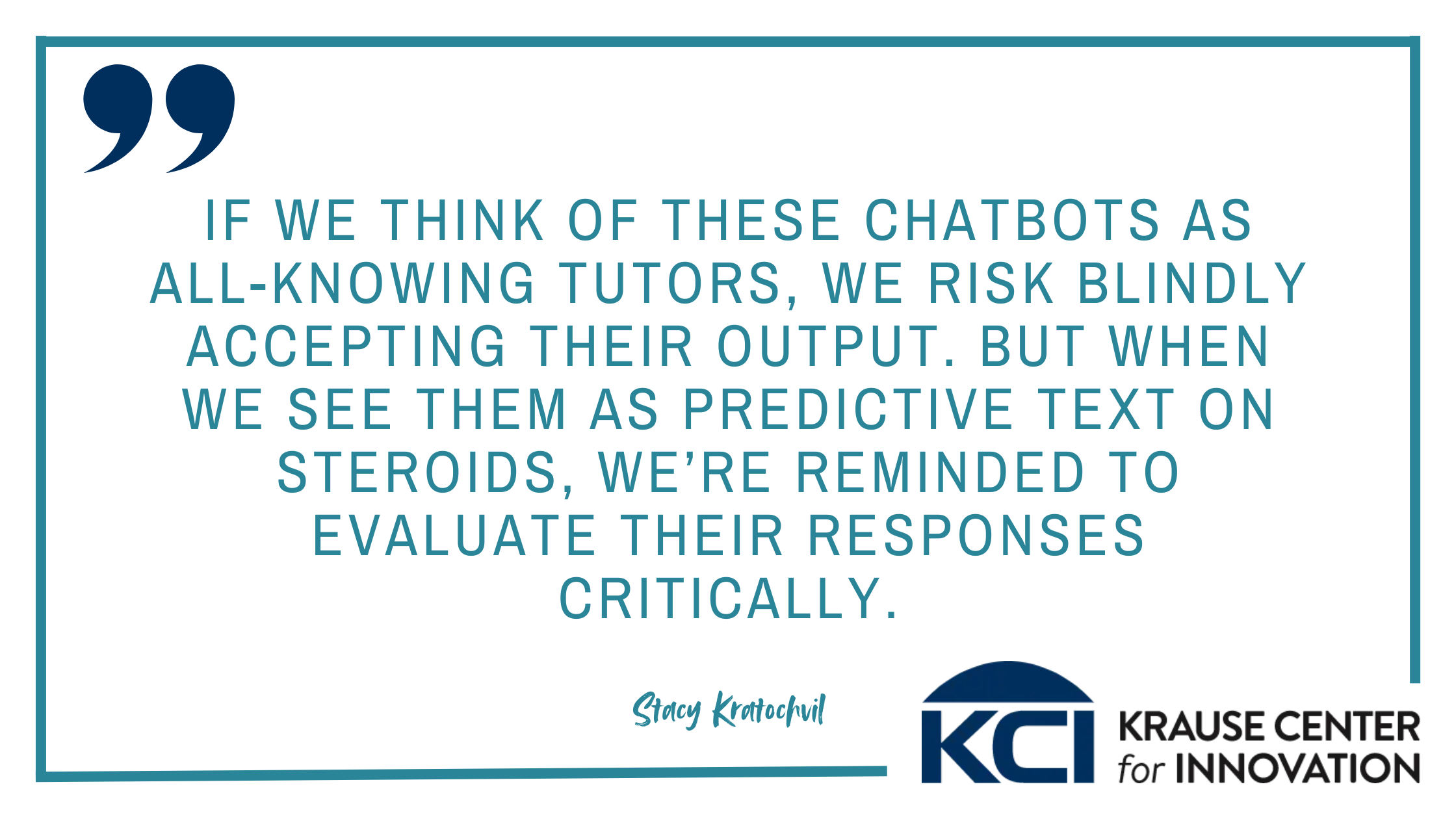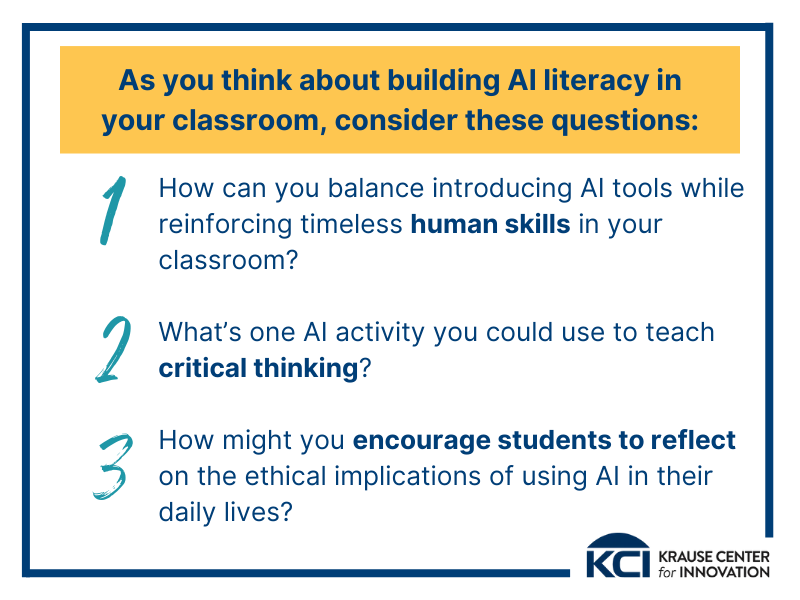January 6, 2025
AI is like your GPS. You plug in the destination, and it gives you directions. It’s great at finding the fastest route, avoiding traffic, and even letting you know when there’s an In-N-Out Burger nearby. But here’s the thing: if you don’t know where you’re going in the first place, the GPS is useless. And if the GPS tells you to turn into a lake (it happens!), you’re the one who has to catch the mistake before things go off the rails.
That’s AI. It’s a tool that helps you get from point A to point B more efficiently. But it doesn’t know why you’re going there, and it won’t tell you if the destination doesn’t make sense. It needs your critical thinking and judgment to steer it in the right direction. Otherwise, you might end up at “Lake In-N-Out!”
What Is a GPT, Anyway?
Large Language Models (LLMs) like ChatGPT are trained on massive amounts of textbooks, articles, websites, and more. Their job is to predict what word or phrase should come next in a given context. A GPT, which stands for Generative Pre-trained Transformer, is a specific type of LLM that uses the Transformer architecture to process and generate text. Let’s break that down… A GPT is like a specialized GPS that’s been pre-loaded with data from all over the world. It knows how to take you (or your sentence) from point A to point B in the smoothest, most natural way possible. “Generative” means it can create something new—like drafting a complete sentence or story—and “pre-trained” means it has already done most of the learning before you start using it.
Imagine you type “Once upon a…” into ChatGPT. Its training allows it to guess that “time” is the most likely next word based on patterns it has seen before. Every response it generates is built word by word, using probabilities to predict the next word (or “tokens” is the technical term) that makes sense.
This process is why AI can sound so convincing. It’s pulling from billions of examples to construct its responses. But it’s also why AI tools can get things wrong. They don’t know anything; they’re just predicting patterns.
If you’re a nerd like me and want to see how a GPT works under the hood, scroll through this very cool website and see how GPTs (Gemini, Claude, ChatGPT, Copilot, Perplexity, etc…) combine “tokens.” This is a great visual resource.
Why Does This Matter?
Understanding how AI works changes the way we approach it. If we think of these chatbots as all-knowing tutors, we risk blindly accepting their output. But when we see them as predictive text on steroids, we’re reminded to evaluate their responses critically.

Here are three key reminders for teachers and students:
- AI Can Be Wrong
AI tools don’t verify facts or understand context. If misinformation is common in the data they’re trained on, they might repeat it. Similarly, biases in the training data can show up in their responses. That’s why evaluating its output is critical. - AI Isn’t Creative. You Are!
While AI can generate ideas or content, it doesn’t have the human insight or creativity to ask the right questions or make nuanced decisions. That’s where we come in! - Ethical Questions Matter
AI tools don’t think about the consequences of their outputs. They don’t consider data privacy, bias, or the environmental impact of training large AI models. Encourage students to ask:- Where does this data come from?
- Who benefits from this technology?
- Who might be left out?
Developing AI Literacy in Our Students
So, what does AI literacy look like in action? It’s more than using chatbots for homework help. We need to foster critical thinking, digital responsibility, and ethical awareness. Students of all ages need to develop an understanding of how artificial intelligence works and critically evaluate its outputs more than they need to be using it directly. Here’s how to get started:
Step 1: Understand How AI Works
Introduce students to the basics of how AI tools generate responses. Encourage them to think of AI as a helpful assistant, not an authority.
Tip: Analogies are helpful, like the GPS one above! Ask your chatbot to give you a few analogies to explain how AI works for the grade level(s) you teach, then pick your favorite and run with it.
Step 2: Evaluate AI’s Output
Teach students to question what AI produces:
- Does this information make sense?
- Is it factually accurate? (Fact-check using reliable sources.)
- Could bias have influenced this response?
AI outputs can be fun to critique too! Have you ever seen AI-generated art where hands have six fingers or limbs are oddly shaped? Use those errors as teachable moments for spotting AI’s limitations and appreciating human creativity.

Step 3: Use AI as a Tool, Not a Crutch
AI is great for brainstorming, simplifying complex ideas, or generating starting points, but it’s up to us to refine and add our unique human perspective.
Not all students will be ready to jump into AI right away. You can still build their critical thinking skills by giving them AI-generated content to critique, improve, debate, revise, or analyze. The more content they practice evaluating, the more prepared they’ll be to use technology wisely.
Bonus Idea: Start with some AI silliness or garbage! ? For example, give students a poorly generated story or image and ask them to “fix” it. This builds their confidence and helps them see that AI isn’t infallible.
Want More? Register for My Workshop on January 23rd!
In my upcoming interactive KCI workshop, AI for Equity: Purposeful AI Integration in Lesson Planning, we’ll go into the AI-world together, learning about its capabilities and limits along the way. By the end, you’ll have practical strategies to experiment with AI tools in ways that complement your teaching and empower your students.
How might we use AI to stay focused on our values and create more equitable experiences for our students? Save your spot now and join us for this hands-on, collaborative session!
Reflection Questions
As you think about building AI literacy in your classroom, consider these prompts:
- How can you balance introducing AI tools while reinforcing timeless human skills in your classroom?
- What’s one AI activity you could use to teach critical thinking?
- How might you encourage students to reflect on the ethical implications of using AI in their daily lives?

The future isn’t just about AI. Imagine the incredible potential of humans and machines working together. I can’t wait to see how our students take the wheel and lead us into an exciting new era of innovation.
AI Resources
- Apply for our Artificial Intelligence Capstone
- Stacy’s AI Workshop Registration
- Stacy’s Blog Posts
- KCI’s Silicon Valley Artificial Intelligence Project (SVAIP)
Note on AI Use:
I used ChatGPT to help me organize and refine my thoughts for this blog. I provided the ideas, notes, and direction, and the AI tool helped me pull it all together. I reviewed and edited everything to make sure it reflects my voice, stories and the message I want to share.

